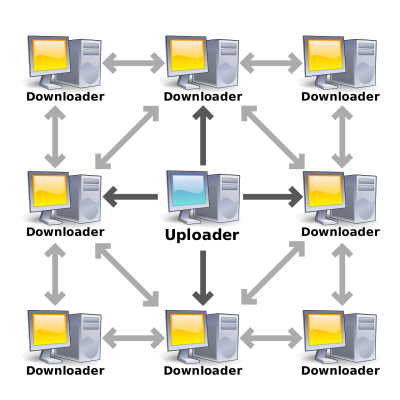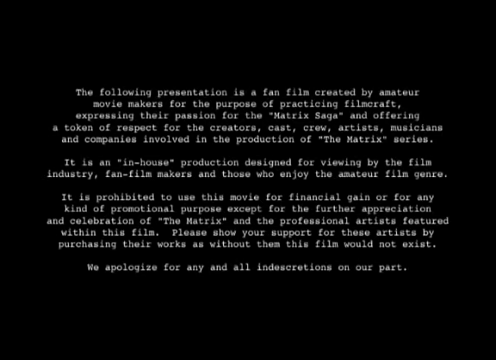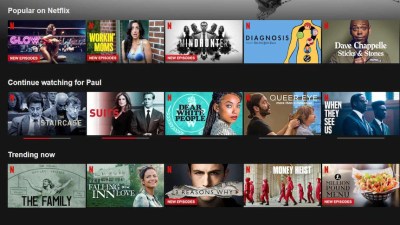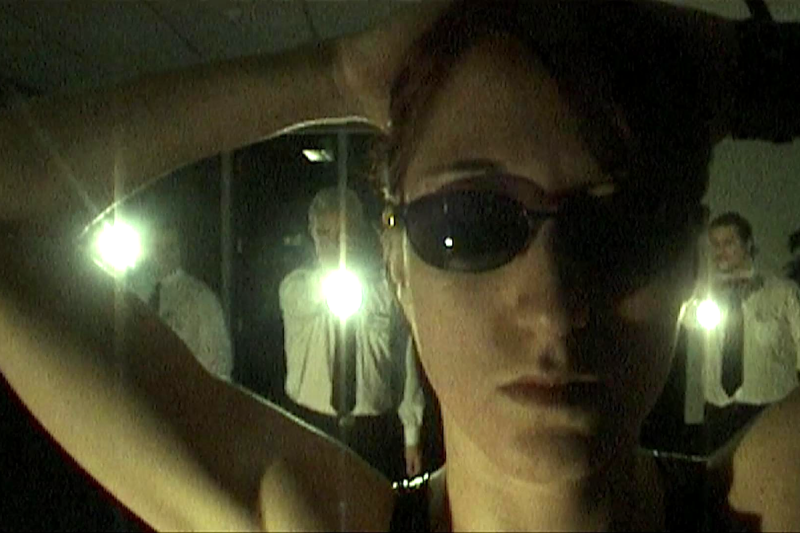Twenty years ago, in a world dominated by dial-up connections and a fledgling World Wide Web, a group of New Zealand friends embarked on a journey. Their mission? To bring to life a Matrix fan film shot on a shoestring budget. The result was The Fanimatrix, a 16-minute amateur film just popular enough to have its own Wikipedia page.
As reported by TorrentFreak, the humble film would unknowingly become a crucial part of torrent history. It now stands as the world’s oldest active torrent, with an uptime now spanning a full 20 years. It has become a symbol of how peer-to-peer technology democratized distribution in a fast-changing world.
The Perfect Tool For The Job

In the early 2000s, sharing large files across the internet was a mindbogglingly difficult problem to solve. In the Southern Hemisphere in particular, home internet connections were often 56 kbit dialup modems at best. Most email services limited attachments to 2 MB at most. Services like MegaUpload weren’t on the scene yet, and platforms like YouTube and Facebook were yet to materialize. Sharing a hefty video file to your friends was a difficult proposition, let alone sharing it with the world. Creative minds were left with limited avenues for distributing their content, with running your own server pretty much the only real solution.
Enter BitTorrent, created by Bram Cohen from the University of Buffalo in 2001. It was a new groundbreaking technology designed to facilitate the transfer of large files by distributing the load across multiple users. This decentralized sharing system allowed users to download pieces of a file from many sources simultaneously.
It quickly changed the game for content creators and consumers alike. It allowed users on slow connections to pull in files from peers piece by piece over a long time, without the dropouts and failures common with simple HTTP transfers. It also allowed communities to organically form to share popular files quickly and efficiently. In theory, every downloader could also share the file back to the network. This meant that as a file was downloaded by more people, there would be more upload bandwidth to make it available to yet more users.
However, with the rise of this new technology came the inevitable tide of pirated content. BitTorrent’s distributed model was perfect for piracy, since its decentralized and nominally anonymous nature made it difficult for rights holders to know who to sue. Films, music, and TV shows began circulating with unprecedented ease, causing alarm in the entertainment industry.
$800 And A Dream

The Fanimatrix was a project that perfectly encapsulated the potential of the BitTorrent protocol. With just $800 in their pockets, a group of friends managed to craft a Matrix homage over nine grueling days. But once the film was in the can, there was a simple question: how to share it with the world?
Traditional methods would involve expensive submissions to film festivals or running a web server online. Both would scale poorly in terms of audience numbers, and present limited reach. The solution came from Sebastian Kai Frost, the team’s IT aficionado. Stumbling upon BitTorrent, Frost saw the potential to sidestep exorbitant server hosting fees. Thus, on September 28, 2003, he released The Fanimatrix torrent to the world.
“It looked promising because it scaled such that the more popular the file became, the more the bandwidth load was shared. It seemed like the perfect solution,” Frost told TorrentFreak.
Fast forward twenty years, and this piece of digital history remains active. A dedicated following remains, still seeding the content to keep the dream alive. It’s believed to be the oldest torrent still active online. It stands as a testament not only to the lasting appeal of the film but also to the robust and resilient nature of the BitTorrent protocol.
Though plans to commemorate the torrent’s 20th anniversary didn’t pan out, the future holds promise. As the team eyes the 25th milestone, there are whispers of a reunion, new content, and even merchandise. Whether or not The Fanimatrix torrent will still be active then remains uncertain. Still, with a community rallying behind it, one wouldn’t bet against it. “I never expected to become the world’s oldest torrent but now it’s definitely become a thing I’d love to keep carrying on. So I’ll be keeping this active as long as I physically can,” said Frost.
The Fanimatrix has been uploaded to YouTube multiple times, but true fans would download it via the original torrent. The creators advise that watching the film requires the DivX 5.1 bundle and at least an 800MHz processor.
The Modern Media Landscape

The story of The Fanimatrix and its two-decade torrent is not just about a fan film’s surprising longevity. It’s also a broader tale of how technology, in the right hands, can transform the way we share and consume content. BitTorrent has evolved since its inception, having become a platform for distributing all kinds of content, both legal and otherwise. Yet, its foundational principle of decentralized sharing remains as relevant as ever.
The Internet has changed since those halcyon early days. Now, if you’re distributing your own content, you’re probably lobbing it onto one or more social media services to get the most eyes on it. The likes of TikTok and YouTube will not only host your videos, they’ll even help promote them if they’re getting enough eyeballs. They’ll even put money in your pocket if you get enough eyes on your content. While anyone can upload to these services, though, and theoretically make a buck, they are anything but democratic. Users must hew the company line, complying with Terms of Service and kowtowing to the demands of corporate advertisers.
The basic BitTorrent ethos, in comparison, hasn’t changed over time. It makes none of those demands of users. It gives you and the broader community a tool to share your content as far and wide as you’d like. At the same time, though, nobody will pay you for your content, and promotion is up to you and whatever word of mouth you can generate. For short films and other similar content, the greater attention and ad dollars on social media tends to leave BitTorrent out of any conversation about distribution.
Similarly, shifting forces have pushed BitTorrent into the background when it comes to mainstream media content. It’s still possible to download pirated TV series, movies, and music on BitTorrent, but it’s far less common for the average punter these days. Paying a tithe to a streaming service or three generally offers access to content with less fuss, a tradeoff that broad swathes of the public are happy to make. While some users will pop over to a torrent site to grab some obscure content they can’t find anywhere else, it’s nowhere near as popular as it once was. An entire young generation has grown up with Netflix and its multitude of rivals, and for them, that’s simply how digital content is consumed these days.
In a way, that’s not a bad thing. Torrents weren’t created for piracy or to distribute Hollywood motion pictures. They were just a useful tool for the job when Big Media hadn’t figured out how to distribute films on computers yet. Users don’t actually mind paying for media when the prices are reasonable and the service is good.
Fundamentally, torrents aren’t going anywhere. They’re still a great tool for grabbing open-source software, for one. They’re also the only place you’re going to find a rip of that obscure Danish film your old college roommate showed you that changed your life. Where the commercial world can’t fill a need, torrents will still be there to help. Torrents will remain a useful tool for community distribution of other types of data, and that’s not going to change anytime soon. So raise a glass to the anniversary of the oldest living torrent, and to many more to come. Cheers!
















““It looked promising because it scaled such that the more popular the file became, the more the bandwidth load was shared. It seemed like the perfect solution,” Frost told TorrentFreak.”
One of the reason the “P” should stand for popularity since it devolves closer to FTP* the fewer seeds there are.
*Hold and Resume.
and so disappointing when that one crucial chunk is not in the swarm. it’s been quite a while since I torrented; I wonder if fountain codes ever made it in
Remember the RIAA and MPAA used to hire companies whose only goal was to remove just a single piece from the Internet. They wanted people to waste time and energy downloading 99.6% of something.
Good thing there are players nowadays that can play incomplete files easily.
“In the early 2000s, sharing large files across the internet was a mindbogglingly difficult problem to solve.”
Oh, there was a solution – do the downloading at a school or university.
They typically had a leased line. 😇
I remember how awesome my college was with its 3 T1 connections in ‘98. Yes… that’s 4.62Mb/s shared by 1000 people. 😂
Mine had a T3 in 1998 IIRC, though I think they probably upgraded to an OC3 soon after that. It also had 10x as many people. With a much leaner web and no commercial streaming services or social media, the load was a lot less. The university rarely had any congestion, and plenty of people were sharing files!
Downloading only solves the taking part not the sharing part.
I still remember when the high school I was at in the 90s (private school here in Australia) got an ISDN line for connecting the school to the outside world and how impressive that felt given that home internet was really slow dial-up at best.
Very specific to the area you lived, but really not “typical” by any measurement.
Youtube…our modern day Napster.
Soulseek still exits, and works. *IT* is our modern day napster =)
Iirc, the issue was maintaining the connection, not the transfer rate. Back then everybody just ran stuff all night only to find Ma Bell had disconnected you sometime
That was an issue for downloading the file. a whole other set of issues existed for hosting them. Both sides need to be solved for large scale distribution of large files. Even games used bit torrent or similar to distribute game patches to help solve the issues of many wanting the same file at the same time.
BitTorrent was awesome on my crappy DSL connection. The neighborhood was congested so slowdowns and connection drops were common during peak hours. I needed download manager software for anything more than a few MB. Once found bittorrent I could reliably download something over the course of DAYS and it would chug along, not caring about connection speed or drop outs.
Some core memories right here…
Running the original bittorrent software, browsing SoulSeek, over a connection to NetZero, using a hack tool to remove the ad bar from the bottom of the screen.
Even back then, users went out of their way to block ads. Seems like the ad crisis is nothing new.
“Twenty years ago, in a world dominated by dial-up connections and a fledgling World Wide Web”
What now in 2003? Perhaps we live in different universes.
In my town, 2003 was the year Verizon first brought 256/64 kbps and 768/128 kbps DSL to us, so yeah – dominated by dialup was definitely accurate.
I had dial-up in a fairly populous suburban area in like… 2008? Sometime around the first time we decided there was a need to upgrade from the 1990s computer we’d been using until then. And we still kept that one around for lesser uses. I had more tech than the average for people in the area at that time.
I just checked and here in the UK BT started rolling out ADSL trials in around 1998, so that’s when I got my first 512kbps service as my exchange was part of the trials.
I just tried downloading the Fanimatrix, took less that 10 seconds once the seeds had loaded. Gotta love gigabit fibre!
“In the Southern Hemisphere in particular, home internet connections were …”
… a bit shit and in rural areas still are. Yes, they have improved but nowhere near as much as they have in cities. We are falling behind.
Having said all that, the city/rural divide in medicine is even bigger. Mrs Flotsam has just completed a near 4000km round trip for a hospital visit.
My 4 and 6 year old open up the terminal and just type “pop” which is an alias to run the vpn and open popcorn time.
So kids do use torrents.
My wife uses netflix/hulu/etc…but occasionally hit the pop command too. Our whole family uses linux for all the TV/computers in the house. She has no issues even though she never heard of linux before me and only used her iphone.
Oh well she has to disconnect from the vpn when she wants to go back to netflix/hulu because they block access if you are own a vpn.
The next evolution I see is making it private. So a torrent based system you can store private information, which I why I started:
collectivefs dot com
Dial up was still very much a thing in rural America at that time. I have distinct memories of setting up a download to run all night and into the next day while I was at school. My house didn’t get DSL until I was in college around 2005. Even now, a lot of the rural co-op utilities have to save up for a while to pay for in install costs of running cable internet out to some areas. I think the house where I grew up in south east Georgia is still DSL only.
I know this article is specifically in response to the 20th anniversary of the Fanimatrix release over bittorrent, but I have to take issue with the unstated implication that it wasn’t possible to transfer media in the cloud before bittorrent. The eDonkey network was launched a year before bittorrent and served a similar purpose, spreading the distribution of big files out amongst the clients that were simultaneously downloading it. Content searching was built into the client. Leeching was far less common on eDonkey than on bittorrent, in fact for many years as they were roughly equally popular, you went to bittorrent for fast downloads of popular content, and used eDonkey for obscure stuff with low peer count. It was much more likely you’d find all the parts of an obscure file with eDonkey than with bittorrent. From 2004 till 2007 eDonkey was the most popular large file sharing network on the Internet, with bittorrent only taking over that crown in 2007.
After a while 3rd party clients became more popular than the original, most notably eMule. Also the eDonkey protocol (eD2K) added an “anonymous” mode which eshewed central servers to find peers and content in favour of P2P broadcasts (aka “Kad”).
Although not as widely known or used today, the eD2K network still exists and you’ll find really old and obscure stuff there you haven’t got a hope of locating on bittorrent.
Don’t get me started on a Usenet diatribe! XD
(The *original* unhosted one-to-many chunked-file distribution platform).
Except it is hosted, at each and every Usenet provider.
When major ISPs stopped providing access, the signs of its demise were near. Once the universities stopped hosting most of alt.* and bin.* it was effectively dead. Whether you blame eternal September, or Google Groups, both played their parts.
I’ve seen a recdng estimated size of Usenet at over 220TiB. Given how file sharing always seemed to have three or four groups releasing different versions of the same thing, I can only imagine how much larger it would be these days if it were still popular. I do miss tales from scary devil monastery.
Thats 180-220TB per day… with retention in the thousands of days
Echoing this. Ed2k stepped in to replace Napster in a way that bittorrent didn’t want to.
It’s major problem was that eDonkey (the application) included a search engine and implicitly shared anything in the /share folder, just like Napster before it. That made it an extremely easy target for the MPAA/RIAA who were, even then, trying their damdest to shut down file sharing.
Yeah, that’s why most of the later eD2K client used Kademlia for searches instead. It was still server based but the actual source sharing was between clients.
Back in the early 2000s, I used eDonkey / eMule for the hard to find files, and torrent for the newly released files. But even before peer to peer, I used mIRC to get large media files
Nothing like the even older BBS days though…….1k a min DL…….would take 5 mins for one spicy picture to appear slowly on your screen 😂😂
When they split up the phone company in the US, I went with AT&T. Their response time was 30 minutes for a document to appear on their screen in the office. Wonder if anyone ever had longer response times.
Thankfully I’ve had cable modem since around 99. And thankfully I didn’t get to experience much dial up in my life.
Just out of curiosity: what is your speed these days? I’m wondering because you had that good headstart.
Always thought the movie industry is missing out by not putting a “Buy Us A Coffee” or donation like link at the end of their films.
Speaking of struggling to download over a poor connection, who remembers GetRight?
That was essential in the late 90s for dial up connections. I used to download loads of ROMs for Mega Drive, Neo Geo and SNES emulators from geocities. Also I remember downloading mp3s at 5kB/s and thinking I’d never seen a faster rate…
i remember this, there was an application called “kazaa” i was downloaded from it
My bro gave me a copy of 164GBs of music he collected, shared, and aggregated on a US carrier ship during a tour to Afghanistan. I forget the name, but think of it as more of a pirate ship.
I’m jealous, my decades old “Media” hdd died recently and it turns out i never backed up my ~200gb of mp3’s & flacs like a f-in idiot.. 🤦♂️ had a go at ‘criminal things’ to try get some back but current day sources (that i’m aware of) hardly have any music from more than a few years ago 😢
Currently trying to decide if i should just suck up the dislike for subscriptions and start using Spotify or save up 1000+ euros to get the data recovered professionally (since all my basic software attempts have failed) 🤔